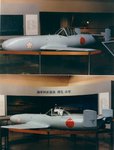BombTaxi
Tech Sergeant
British batteries could have done little else with the fire control equipment available at the beginning of WW2 
It is true though, civilian morale can be improved by providing air defence, even if it is totally ineffective. The fighter patrols mounted against the Zeppelins in WWI, and the provision of early AAA defences around London are cases in point.
It is true though, civilian morale can be improved by providing air defence, even if it is totally ineffective. The fighter patrols mounted against the Zeppelins in WWI, and the provision of early AAA defences around London are cases in point.

